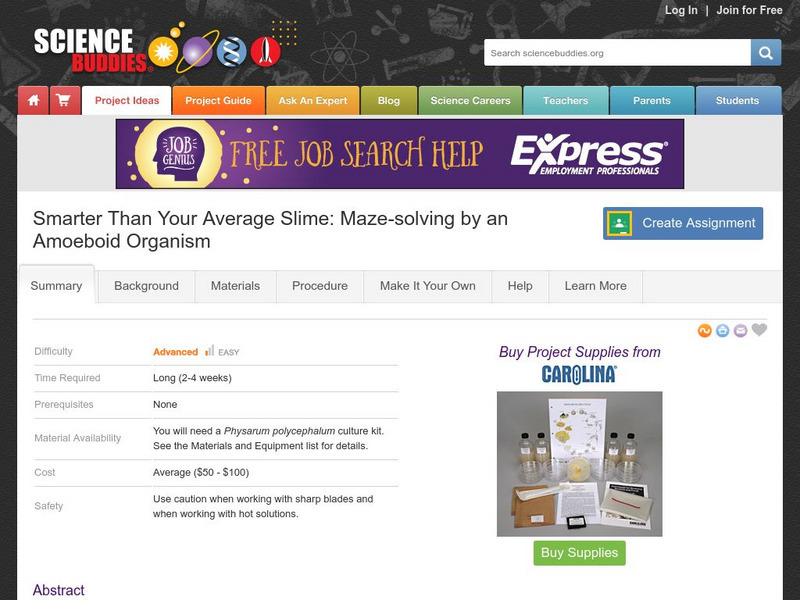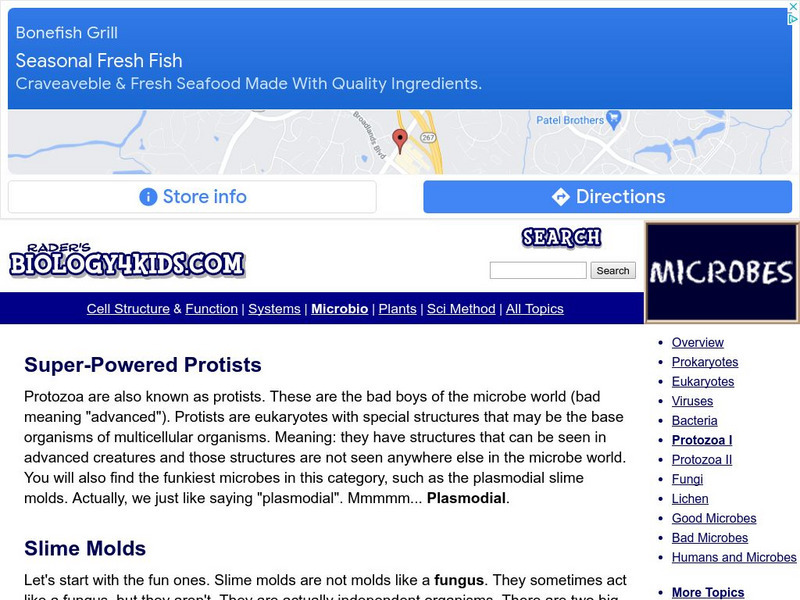Hi, what do you want to do?
Science Buddies
Science Buddies: Slimey Likes It! Studying Chemotaxis in Physarum Polycephalum
In this biology science fair project, test various amounts of glucose to see which ones attract and which repel (chemotaxis) growing Physarum polycephalum slime mold.
Science Buddies
Science Buddies: Smarter Than Your Average Slime: Maze Solving by an Amoeboid
In this science fair project, grow the acellular slime mold Physarum polycephalum and test its ability to find the shortest path through a maze.
Wikimedia
Wikipedia: Slime Mold
Wikipedia provides several paragraphs of information on slime molds, members of the Protista kingdom. Includes image.
McGraw Hill
Glencoe Biology: Funguslike Protists: Self Check Quiz
Answer these five multiple-choice questions about fungus-like protists. After answers are submitted, students can review their mistakes.
CK-12 Foundation
Ck 12: Biology: Protist Kingdom
[Free Registration/Login may be required to access all resource tools.] Introduction to the diverse protist kingdom.
National Health Museum
Access Excellence: Slime Mold Biology Activity
This site offers instructions for a biology lab involving slime mold. Includes steps for the 5 day procedure and explains how students should evaluate their observations.
Biology 4 kids
Biology4 Kids: Super Powered Protists
Meet the "big guys" on campus. Protists are the more advanced types of eukaryotes that are unique such as amoeba and slime molds.
CK-12 Foundation
Ck 12: Biology: Molds
[Free Registration/Login may be required to access all resource tools.] Describes different types of fungus-like protists.
CK-12 Foundation
Ck 12: Life Science: Fungus Like Protists
[Free Registration/Login may be required to access all resource tools.] Fungus-like protists share many features with fungi. Like fungi, they are heterotrophs, meaning they must obtain food outside themselves. They also have cell walls...













